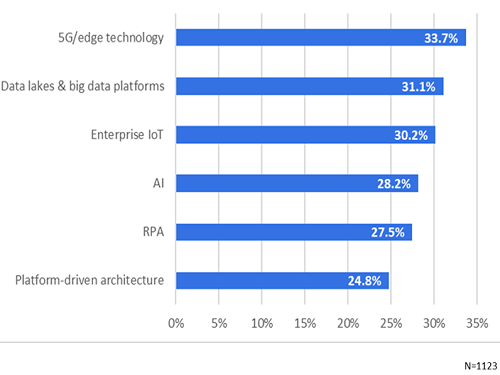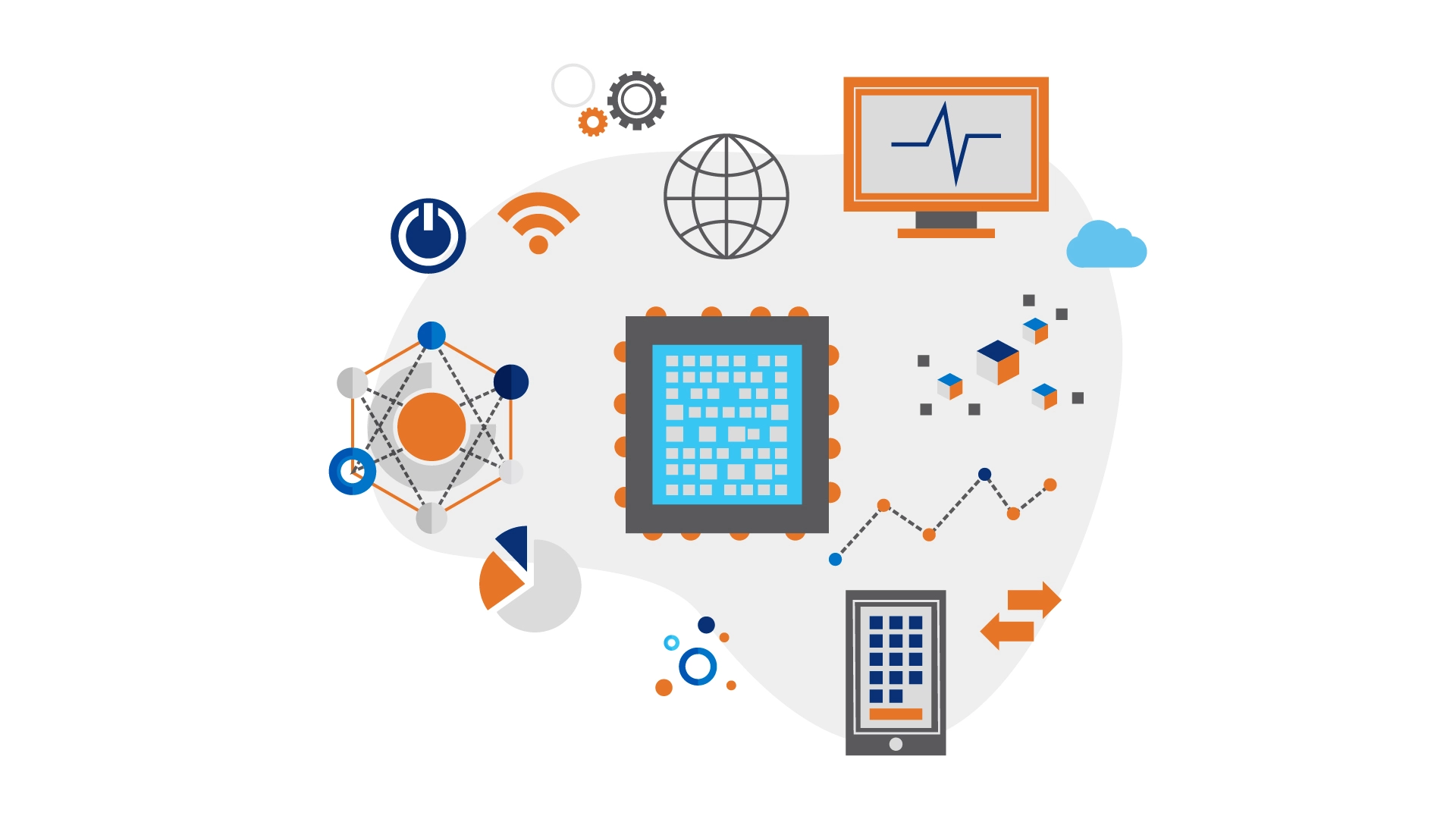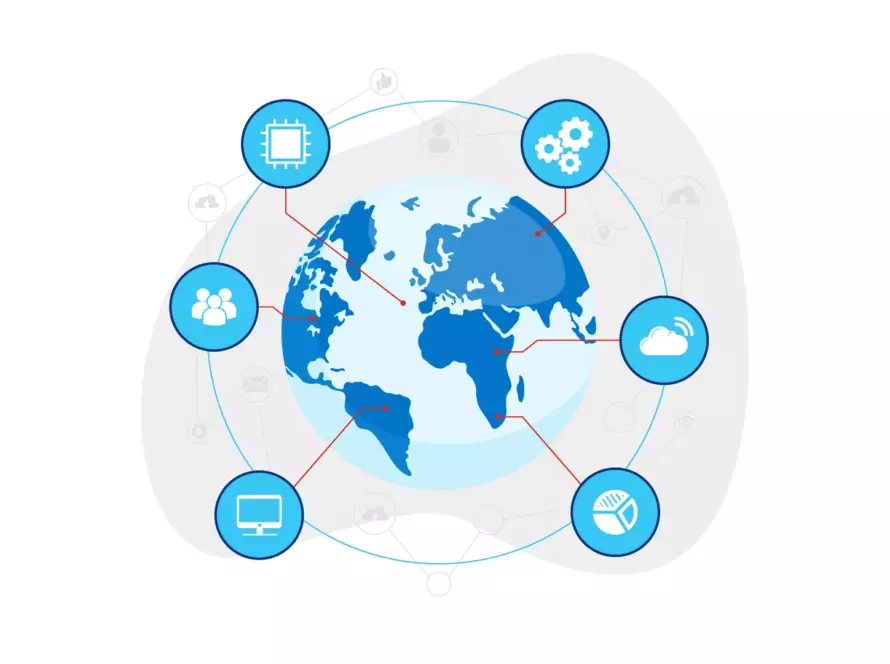Enterprises Look to Edge Computing to Accelerate Business
Developments in artificial intelligence, analytics, and robotics are steadily increasing automation and improving business insights for enterprises across every major industry. The Internet of Things (IoT) gave enterprises control and visibility into elements of their business, be it a machine on a manufacturing floor, a streetlight on a public thoroughfare, or a truck transporting goods. The advent of 5G is increasing use cases for IoT, and the speed at which information can be processed and communicated. Businesses leverage the intelligence gained from IoT and analytics to become more automated and efficient. Enterprises must adapt their own business to this new environment or be left behind. To take advantage of new tools and technologies, they need network platforms that are fast, flexible, secure, and can deliver real-time business insights.
Emerging IoT and 5G use cases rely on a dense, high-performance network infrastructure. Time-sensitive tasks like real-time video processing or industrial machine control need instant feedback, and that means locating compute processing close to endpoints – the principle behind edge computing. Edge computing is cloud computing. While the requirements of “the edge” vary by market players and industries, at its core edge computing is about optimizing for fast data analysis and response. That requires compute processing and storage located close to endpoints.
Data-gathering and control endpoints can be devices, machines, or any location where a sensor is placed to monitor some activity or process. IoT gives enterprises the power to track, monitor, and control an unlimited number of sensors, while 5G and edge computing deliver the scale and computing power that complement IoT by accelerating automation and increasing efficiency.
“
68.7% of enterperises view application delivery services as relevant to their organization’s edge strategy
Omdia’s annual ICT Enterprise Insights survey of global enterprises found that 5G and edge technology, along with big data and IoT, are leading priorities in their technology investment plans. Enterprises were asked to rank technology investment priorities for the next 18 months from “Very Important” to “Not Important.” Figure 1 lists the top categories listed as “Very Important,” by 1,123 respondents based in the Asia Pacific region, highlighting the importance of 5G, edge computing, big data, and IoT in enterprise strategies.

Figure 1: APAC enterprises’ technology investment priorities
Source: “Omdia ICT Enterprise Insights 2020/21 – Global,” September 2020
Taking this a step further, a separate Omdia survey that included interviews with Chief Information Officers (CIOs), IT directors, and Chief Marketing Officers (CMOs) of 20 large enterprises in Southeast Asia found that 37% of companies surveyed have already begun deploying edge services as part of their digital business plan, and many of these companies are now expanding from their initial deployments. Another 34% are planning for the deployment of edge services, with 29% still in the evaluation phase.
New Technologies Call for New Business Models
While enterprises in many vertical markets are exploring or planning edge compute strategies, Omdia singles out smart manufacturing, public sector, and education as the top three industries in terms of planned investment in edge technology. To secure their role in these transformation initiatives, service providers must develop new business models. They need to create solutions that bring intelligence, compute, storage, and applications closer to wherever the edge may be for each type of industry.
Moving compute resources to the network edge was initially driven by 5G and IoT, but it is evolving to become a high-performance compute vehicle to support multiple types of network connectivity, different types of hosting environments, and business applications. As the concept of edge computing gained ground over the last few years, service providers began adapting their physical infrastructure models to place resources for wireline and wireless services closer to users. Tier 1 network providers have converted central offices (COs) and points of presence (PoPs) into edge facilities, creating mini data center and cloud environments. In the US, Lumen Technologies began this process years ago, stepping into an edge computing strategy that was designed to be network agnostic, to support multiple connectivity services, not just 5G wireless. Network providers like Lumen have thousands of facilities around the world that can host edge computing nodes.
Watch: Learn how you can capitalize on a convergence of emerging technologies that power the 4th Industrial Revolution
Wireline broadband specialists such as cable operators also are exploring a role in edge computing. These providers can leverage their cable system headends, while wireless operators can host edge computing in their wireless PoPs. In some markets, even wireless tower infrastructure providers are anticipating the edge computing opportunity and are investing in distributed data centers. These operators hope to host edge computing to support their wireless operator clients, plus cloud services providers, hyperscalers, and other companies that want to collocate in the edge to serve their clients.
An obvious opportunity for edge computing providers is to work with global cloud provider partners such as Alibaba, Amazon Web Services (AWS), and Microsoft Azure, delivering a hosting environment at the edge that connects to telecom access networks. Cloud providers have toyed with owning edge data centers and some offer their cloud stacks configured for dedicated, on-site hardware. But cloud providers have nothing like the physical assets of national and global network service providers.
Lumen Platform
Discover how the Lumen platform complements these leading cloud solutions
Relying entirely on connectivity puts providers at risk of being a very small part of the overall edge solution. This approach will not support the long-term growth service providers need. Network providers must find ways to add value beyond connectivity. Connectivity and devices are the foundation for edge computing, and there is an opportunity for infrastructure management services that include orchestration, hosting, and operational management.
Combining the pieces, a provider of the future could assemble a mix of IaaS – hosted centralized, at the edge, and on-site; and a mix of network – dedicated connectivity broadband and wireless. They can assemble the components, provide a unified service wrap, and deliver an integrated solution available on a retail or wholesale basis. There is also the potential for wholesalers to create an ecosystem, assembling a suite of vendors, service providers and integrators that support development and delivery of applications virtualized and optimized for the edge.
Service providers also need to invest in resources to develop a deep understanding of the industries if they choose to target some directly. This includes developing internal expertise across product and sales teams, demonstrate in-depth industrial expertise.
The ability for service providers to coordinate the various elements of the edge, bringing connectivity together with hosting resources, on-premise equipment, and service delivery orchestration, and underpinning these solutions with business outcome-based SLAs, will help providers differentiate themselves, deliver value to customers, and maximize their edge opportunity.
The Edge Ecosystem Built for the 4th Industrial Revolution
Discover how you can harness the power of edge in the 4th Industrial Revolution today.


Cindy Whelan
Cindy Whelan leads the Enterprise Networks and Wholesale team, heading research focusing on service provider and vendor strategies across enterprise WAN, LAN, and wholesale services.



